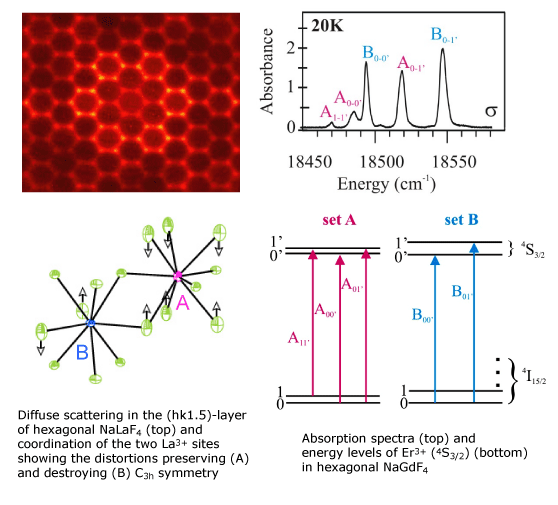|
|
Molecule of the Month January 2006 |
|
| Structural and Spectroscopic Characterization of Active Sites in a Family of Light-Emitting Sodium Lanthanide Tetrafluorides | ||

|
||
|
The first polarized absorption spectra of single crystals of hexagonal NaGdF4: Er3+, a member of an important family of upconversion (UC) materials, have been measured. In this host lattice, Er3+ substitutes for Gd3+. The spectra show two sites (right, A, B) with different symmetries. To elucidate the structural nature of the photoactive sites and to correlate them unambiguously with the spectroscopic data, a conventional crystal structure analysis was insufficent, because it indicated two sites with the same symmetry (C3h). It was necessary to interpret the diffuse X-ray scattering (top left) in terms of a microscopic model of disorder to reveal distortions from the average structure on both sites, one preserving the other one destroying the average symmetry (bottom, left). Diffraction experiments were done on hexagonal NaLaF4, which is isostructural to hexagonal NaLnF4 (Ln = Y, La-Lu).
This work was carried out in the group of Prof. Hans Ulrich Güdel. References:
|
||